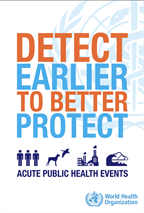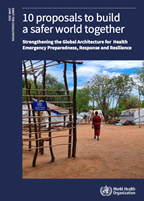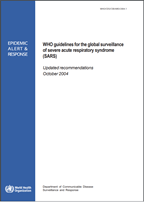Videos
Publications
Defining collaborative surveillance
The complex challenges highlighted by the COVID-19 pandemic and other major health emergencies emphasize the need to rethink our approach to surveillance,...
Populations affected by emergencies are continually at risk of outbreaks of epidemic-prone diseases and other public health hazards. This operational guidance...
This document summarizes current WHO guidance for public health surveillance of coronavirus disease 2019 (COVID-19) in humans caused by infection with...
Maintaining surveillance of influenza and monitoring SARS-CoV-2 – adapting Global Influenza surveillance...
This interim guidance is most useful for countries interested in monitoring relative circulations of influenza and SARS-CoV-2 viruses. The document provides practical...
Environmental surveillance by testing of wastewater for evidence of pathogens has a long history of use in public health, particularly for poliovirus and...

Detect earlier to better protect
WHO provides national health authorities, and stakeholders supporting them, with guidance for implementing or enhancing all-hazards Early Warning and Response...
Managing epidemics: Key facts about major deadly diseases
Epidemics of infectious diseases are occurring more often, and spreading faster and further than ever, in many different regions of the world. The background...
Communicating risk in public health emergencies: a WHO guideline for emergency risk communication (ERC)...
Recent public health emergencies, such as the Ebola virus disease outbreak in West Africa (2014–2015), the emergence of the Zika virus syndrome in...
Surveillance for Zika virus infection, microcephaly and Guillain-Barré syndrome: interim guidance
This document provides interim WHO recommendations for the surveillance of Zika virus and potentially related complications. It has been developed in consideration...
Outbreak surveillance and response in humanitarian emergencies: WHO guidelines for EWARN implementation
Humanitarian emergencies often involve the displacement of large numbers of people. Those affected are frequently settled in temporary locations with high...
Early warning surveillance and response in emergencies
The Disease Control in Humanitarian Emergencies (DCE) team within the department of Global Alertand Response at WHO headquarters is conducting a project...
Myriad health threats have the capacity to cross borders. In anticipation and response, the World Health Organization (WHO) gives voice and leadership...

-framework5fc4ddbd-b5cb-4bbb-b12d-106d3de0d819.tmb-549ve75c.png)
